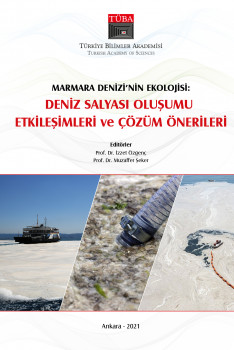Mucilage Problem and Solution Methods in The Sea of Marmara

Mucilage Problem and Solution Methods in The Sea of Marmara
Due to the nutrients carried by the wastewater flowing into the Marmara Sea, a serious proliferation of algae and other phytoplankton has occurred in the sea. Depending on algae and other phytoplanktons, sea saliva has occurred in the Sea of Marmara and is still continuing its effect. Total carbon, inorganic carbon, total organic carbon and total nitrogen values of sea water were analyzed. Total carbon, inorganic carbon, total organic carbon and total nitrogen values of sea saliva were also determined. The pH value of mucilage is between 6.70-6.94, and the pH value of sea water is between 7.97-8.15. It is seen that mucilage is acidic and seawater is basic. In the nitrogen + phosphorus experiment, it was observed that the pH value of sea water decreased to 7.13-7.25, and the environment became acidified by decreasing to 6.4 in mucilage. The electrical conductivity of seawater increased with the increase in acidity. The dissolved oxygen content of sea saliva is too small to be measured, and the oxygen value rises up to 1.21-1.22 ppm if 25% fresh water is added. Untreated water should not be thrown into the sea to protect the marine ecosystem, on the contrary, adding fresh water or sea water with high oxygen content to the Sea of Marmara will contribute to the protection of the marine ecosystem.
